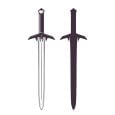
Every day, you generate data. You make it when you text friends, buy coffee, or watch YouTube videos. Companies collect this data and use it to make money. They anticipate your needs and desires before you do. In data science, numbers are used to make good decisions. Netflix knows what shows you’ll love. Amazon suggests products you need. Your phone warns you about traffic jams before they happen.
Many people think data science is too hard. They are of the opinion that it can only be accomplished by extremely knowledgeable mathematicians. It is not true. Anyone can learn the basics and use them to solve real problems. This guide shows you exactly how data science works. You’ll learn simple steps that make sense. We’ll share real examples and help you avoid common mistakes. By the end, you’ll know how to start your own data science journey today.
How does data science work? Data science looks for patterns in data. Imagine yourself as a detective. You collect clues (data), study them carefully, and solve mysteries (make decisions). It’s the art of turning raw numbers into smart business moves that companies use every day.
Every successful company today uses data science in some form. Data science collects information from different places, cleans up messy data, finds patterns and trends, makes charts that tell stories, and predicts what might happen next. These steps work together like a recipe for success.
Real Example: Starbucks tracks what drinks you buy and when you visit. They notice you always order a caramel latte on Tuesday mornings. The company uses this pattern to send you a coupon for caramel lattes on Monday night. This makes you happy because you save money, and it helps Starbucks sell more drinks because they target the right customer with the right offer at the right time.
Data scientists combine three important skills to make this magic happen. They use mathematics to discover patterns in a lot of data. They need computer skills to handle datasets with millions of rows that would crash regular programs. Most importantly, they apply business knowledge to solve real problems that matter to people and companies. Without all three skills working together, data science projects often fail to create real value.
Step 1: Gather Your Information
Data collection means gathering information you need to solve specific problems. You can find valuable data everywhere around you, from your daily activities to global events. The key is knowing where to look and what questions you want to answer.
In order to comprehend what people buy and when they buy it, businesses collect data from shopping websites. Social media apps track what people like, share, and comment on to improve user experience. Farmers use weather stations to plan their crops because they record temperature and rainfall. People can stay healthy by using fitness apps that track their steps and heart rate. Survey forms capture customer opinions to improve products and services.
Try This Today: Write down everything you spend money on for one week. Use a simple notebook or phone app to track each purchase, including the amount, location, and what you bought. This creates your first dataset to practice with, and you’ll be surprised what patterns you discover about your own spending habits.
Success Story: A Chicago pizza shop owner started keeping track of which toppings were selling the most each day of the week. He kept meticulous records for two months and discovered that Fridays and weekends saw 40% more pepperoni orders. He also noticed that veggie pizzas sold better during the week when health-conscious office workers ordered lunch. Armed with this knowledge, he started preparing extra pepperoni for weekend rushes and promoted veggie specials during weekdays. Because he ordered ingredients more precisely, his sales increased by 15% over the course of two months and food waste decreased by 25%.
2nd Step: Clean Your Data
Raw data is always messy, just like a rough diamond that needs polishing before it becomes valuable. If you don’t correct the spelling, missing entries, incorrect numbers, and inconsistent formats of real-world data, you could draw completely incorrect conclusions. Data problems show up in many frustrating ways. You might find missing information where important numbers should be, creating blank spaces that break your analysis. Different people spell the same thing in various ways, like writing “USA,” “United States,” “U.S.A,” or “America” for the same country. When the same person or transaction is recorded multiple times by mistake, this is called a duplicate entry. Date formats become a nightmare when some people write “01/15/2024” while others use “January 15, 2024” or “15-Jan-24” for the same day.
Why This Matters: Research shows that bad data costs American companies $3 trillion every year in wrong decisions, wasted marketing budgets, and missed opportunities. One major retailer discovered they were sending winter coat advertisements to customers in Florida because their location data was corrupted. Clean data saves money and prevents embarrassing mistakes that hurt your reputation.
Simple Cleaning Steps: Start by removing duplicate rows that appear more than once in your dataset. Fill in missing numbers with averages or reasonable estimates based on similar entries. Fix spelling mistakes by choosing one standard way to write each term and sticking to it throughout your dataset. Make all formats match by converting dates, phone numbers, and addresses to the same style.
Practice Tip: Use Excel or Google Sheets to clean your spending data from Step 1. Look for duplicate entries where you might have recorded the same purchase twice. Make sure that “McDonald’s,” “McDonald’s,” and “McDonald’s” are all spelled correctly in store names. You’ll quickly see how much cleaner and easier your data becomes to work with.
Step 3: Analyze Your Data
Analysis means becoming a detective with your clean data, looking for patterns and connections that reveal important truths about your situation. You use simple math and logical thinking to find answers by asking intelligent questions. This step transforms boring numbers into exciting discoveries that can change how you make decisions.
The best data analysts start with basic questions that anyone can understand. What happens most often in your dataset, and why might that pattern exist? Which numbers are highest and lowest, and what makes them different from the middle values? How do things change over time – do you see trends going up, down, or staying steady? What connections exist between different pieces of information that might surprise you?
Real Example: A small clothing store in Denver studied six months of their sales data using nothing more complicated than Excel. They noticed that jacket sales jumped 200% in November and December compared to summer months. But they also discovered something unexpected – their wool sweater sales peaked in October, a full month before jacket sales increased. This insight helped them realize that customers buy warm sweaters first when weather starts cooling, then purchase heavy jackets when winter truly arrives. They changed their ordering schedule to stock sweaters in September and jackets in October, which increased their profits by 30% the following year.
Start Simple: Look at your phone’s built-in screen time report, which automatically tracks your app usage. Compare your weekday patterns to weekend patterns and notice the differences. Which apps do you use most during work hours versus relaxation time? You’ll spot patterns about your own behavior that you never consciously noticed before, like spending more time on social media during lunch breaks or using productivity apps mainly on Monday mornings.
The beauty of data analysis is that you don’t need expensive software to get started. Excel and Google Sheets can handle most basic analysis tasks that beginners need. For simple comparisons, percentages, and averages, your calculator app works perfectly. Sometimes the most powerful analysis tool is just paper and pencil for drawing connections between different ideas and sketching out relationships you discover in your data.
Step 4: Make Visual Stories
Charts and graphs help people understand complicated data in just a few seconds, turning confusing numbers into clear pictures that tell powerful stories. A well-designed visual can communicate what would take paragraphs of text to explain, making your insights accessible to everyone from your boss to your grandmother.
Different types of charts work best for different kinds of information. Bar charts are excellent at comparing various groups, such as displaying which of your store’s products are most popular. Line charts reveal how things change over time, perfect for tracking your website visitors month by month. Pie charts display parts of a whole, ideal for showing how you spend your monthly budget across different categories. Maps work wonderfully for location-based information, helping you see regional sales patterns or customer distribution across different cities.
COVID-19 Example: During the pandemic, government health websites used simple line charts to show daily virus cases in each state. People understood rising and falling infection rates much better than when they tried to read long reports filled with tables of raw numbers. These visual dashboards helped millions of people make informed decisions about travel, gatherings, and safety precautions because they could instantly grasp the trends in their area.
Your Turn: Using Google Sheets or Excel, turn your weekly spending data into a vibrant pie chart. You’ll instantly see how much money goes to food, transportation, entertainment, and other categories. Most people discover they spend more in certain areas than they realized, leading to better budgeting decisions. The visual impact of seeing that 40% of your budget goes to restaurants can motivate changes that spreadsheet numbers alone never could.




